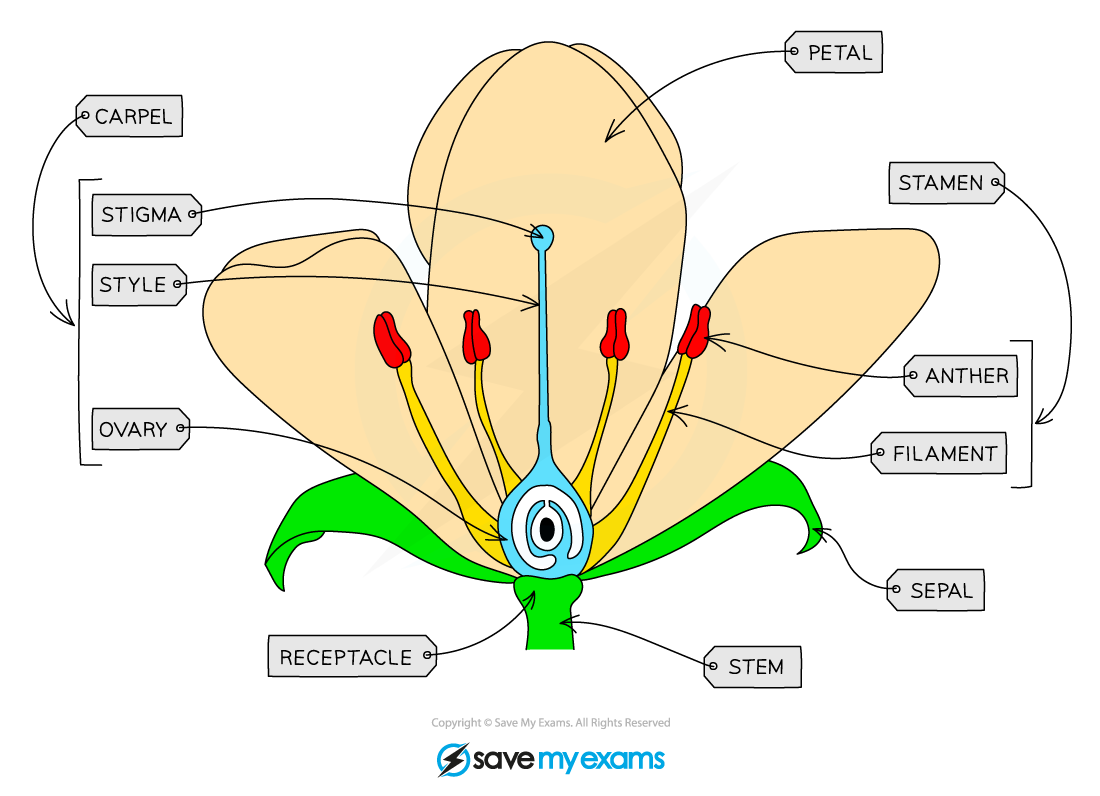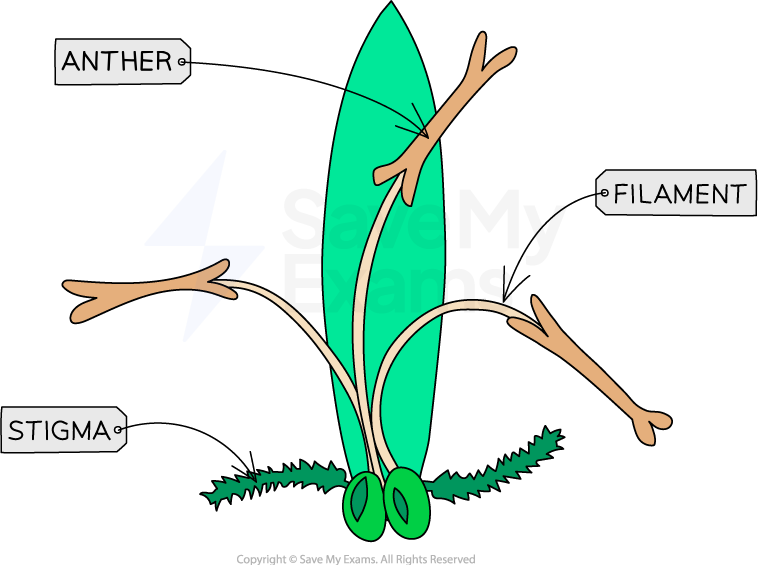Adaptations for Pollination (Edexcel IGCSE Biology (Modular)) : Revision Note
Did this video help you?
Insect-Pollinated Flowers
Flowers are the reproductive organs of plants
The role of flowers is to enable plant gametes to come together in fertilisation
The male gametes of plants are found in pollen grains
The female gametes of plants are in ovules
The process by which pollen is transferred from the male part of a flower to the female part of a flower is known as pollination; this can be carried out in various ways, e.g. by insects or by wind
Insect-pollinated flower structure

Insect pollinated flowers are adapted to attract insects and aid insect pollination
Structure | Description |
|---|---|
Sepal | Protects unopened flower |
Petals | Brightly coloured in insect-pollinated flowers to attract insects |
Anther | Produces and releases pollen |
Filaments | Provides support to the anther |
Stigma | Sticky top of the female part of the flower which collects pollen grains |
Style | A tube that connects the stigma and ovary |
Ovary | Contains the ovules |
Ovule | Structures inside the ovary that contain the female gametes |
Structural adaptations of insect-pollinated flowers
Insect pollinated flowers are adapted to allow insects to collect pollen from one flower and easily transfer it to another flower
When an insect enters a flower in search of nectar it brushes against the anthers, which deposit sticky pollen onto the insect's body
When the insect visits another flower it brushes against the stigma and deposits some of the pollen from the first flower; this is pollination
Feature | Adaptations of an insect pollinated flower |
|---|---|
Petals | Large and brightly coloured to attract insects |
Scent and nectar | Scent and nectar are produced to encourage insects to visit the flower and push past stamen to get to nectar |
Anthers | Held on stiff filaments within the flower so that they brush against insects |
Stigma | Sticky stigmas within the flowers catch pollen grains when insects brush past |
Did this video help you?
Wind-Pollinated Flowers
Wind pollinated flower structure
Wind-pollinated flowers do not need to attract insects, so their structure differs from that of insect-pollinated flowers

Wind pollinated flowers have anthers that hang outside the flower on long filaments, and feathery stigmas that can catch pollen easily
Structural adaptations of wind-pollinated flowers
Wind pollinated flowers are adapted so that wind can easily catch pollen grains and carry them to the stigmas of other flowers
The anthers and stigmas of wind pollinated flowers hang outside the flower so that:
pollen can easily be blown away by the wind
pollen can easily be caught by the stigmas of other flowers
Feature | Adaptations of a wind pollinated flower |
|---|---|
Petals | Small and dull, often green or brown in colour; producing colourful petals would be a waste of energy |
Scent and nectar | Scent and nectar are not produced; this would be a waste of energy |
Anthers | Held on long filaments outside the flower to release pollen grains easily into the wind |
Stigma | Feathery stigmas outside the flower catch airborne pollen grains |

You've read 0 of your 5 free revision notes this week
Sign up now. It’s free!
Did this page help you?
